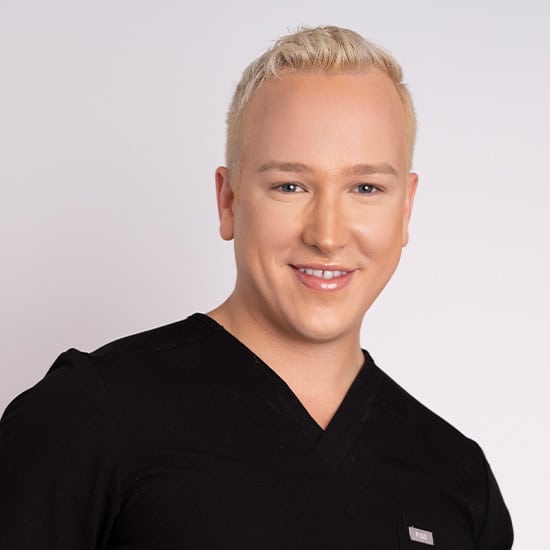Juvéderm® Volux™ XC
Quick Links
What is Juvéderm® Volux™ XC?
A weak and undefined jawline can make you avoid pictures from certain angles – it can also impact the balance of your natural features. If you’re looking for jawline definition without surgery, Juvéderm’s® latest injectable treatment may be for you. Juvéderm® Volux™ XC is the first dedicated jawline contouring filler that can define and enhance the jaw and chin, enhancing the facial profile. Made with industry leading VYCROSS® cross-linking technology, it can produce long-lasting definition with the thickest hyaluronic acid formulation in Juvéderm’s family of fillers.
Volux™ can improve the following concerns with a quick and easy injection process:
- Weak or undefined jawline
- Under-projecting chin
- Jowls and jawline sagging
Who Can Benefit from Juvéderm® Volux™ XC?
If you’re age 21 or older and looking for a way to augment and sculpt the jawline for a more balanced look, Volux™ is an exciting new option for you. However, if you’re pregnant or breastfeeding, have a history of scarring or severe allergic reaction, or have any active infections at the treatment site, Volux™ may not be a good option. During a consultation with our experienced injectors, our team can determine if you’re a good candidate for Volux™.
Great Skin Made Easy
Complimentary Skincare Diagnostic
Our team of experts will start with a comprehensive consultation using our exclusive SkinScope LED™ technology. We will build the perfect treatment plan to satisfy your skin’s needs.
Schedule an appointment
The Juvederm® Volux™ XC Treatment
Juvéderm® Volux™ contains lidocaine (denoted by “XC”) for a comfortable injection process, but our team can also supply a topical numbing cream if needed. Once your treatment area is assessed and a treatment plan is created, the product is injected into the jawline using a very fine needle. Your knowledgeable injector will carefully create your desired results and you will be able to see instant improvement. Treatment with Volux™ takes 20-60 minutes depending on your treatment goals.
Juvéderm® Volux™ XC Results
You can return to your normal schedule right away after Volux™ treatment, although you should avoid intensive exercise, alcohol, and sunlight for at least two hours. Make sure to also avoid rubbing, massaging, or applying pressure to the injection site. You’ll be able to see immediate improvement after your treatment, but we recommend allowing up to two weeks before judging your final results. Because Volux™ is one of the thickest Juvéderm® formulations available, it can last up to two years.
Patient
Testimonials
“Go see Jeana! She is amazing at what she does ! I love the Moxi treatment that I got today, such great results !”
- Leigh N.
View reviewsContact Our Office
To learn more about our newest injectable offering, we invite you to schedule a consultation at our Grand Rapids, MI location and meet with our knowledgeable injectors. To consult our team of specialists at SkinCeuticals SkinLab™ by Plastic Surgery Associates, contact us by calling or scheduling online.














